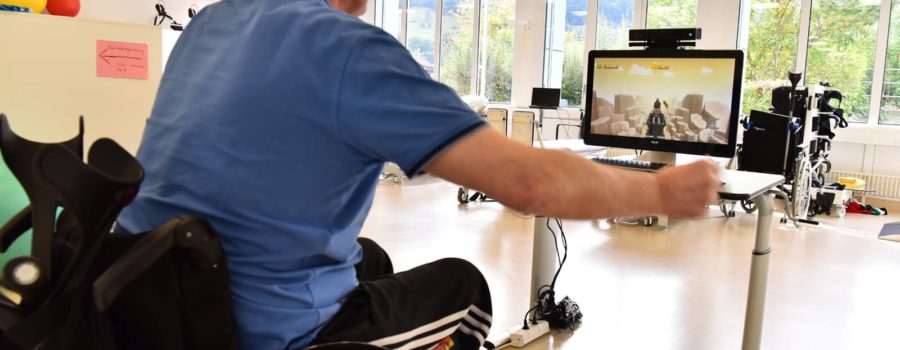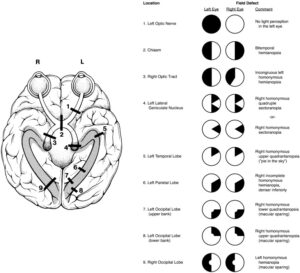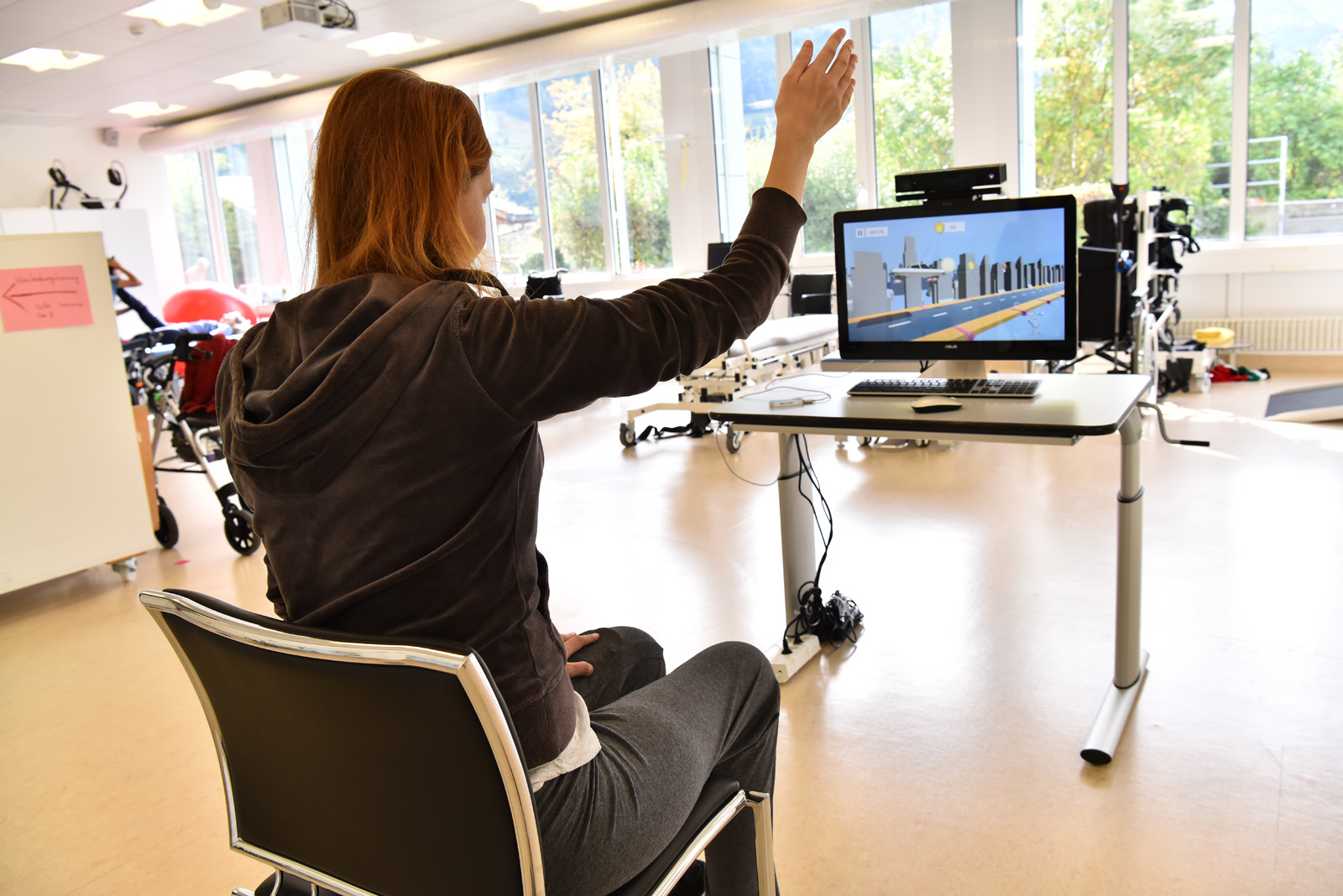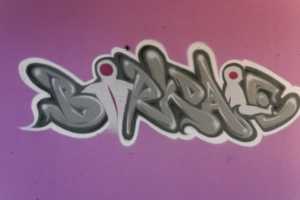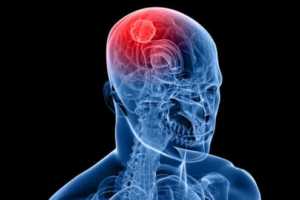Advanced Neuroscience and Digital Therapeutics
MindMotion GO and MindMotion PRO are each a first-of-its-kind mobile neurorehabilitation therapy system that helps people regain motor functions, damaged by brain injury. This stimulating digital therapy incorporates game-playing with virtual reality and augmented reality and real-time cognitive feedback for patients. This technology is endorsed by philanthropist Leonaro DiCaprio, who joined Mindmaze as an investor and advisor in 2017.
The Role of Ocular Motor Skills in Daily Life
Motor recovery is vital for the neuro rehabilitation of patients with brain injury. Ocular motor skills are key to living an independent daily life. Visual processing is responsible for the brain’s ability to spatially organise, plan motor skills and negotiate space.
The Role of Eye Movements in Stroke Patients affects all of daily life, such as the ability to navigate through narrow spaces and causing difficulty walking indoors without knocking into objects. Difficulties with perception are also a big issue. One example is a room containing many pieces of furniture; a stroke patient will likely have difficulty navigating around or between the furniture. They also have difficulty judging if their cup is full as they have no depth perception. They have difficulty drawing a complete picture or even realising some part of the picture is missing.
Challenges
Loss of hand function is widely reported by stroke patients as the most disabling motor deficit. Evidence shows us that learning new motor skills is essential for inducing functional neuroplasticity and functional recovery. A powerful tool in motor recovery is adaptive, interactive neuro training, which can consistently develop a motor outcome that is closer to the targeted real life skill. Technology-facilitated, repetitive movement training has proved an effective stimulus for normalizing upper extremity motor control in patients with moderate to severe impairments, who otherwise have difficulty performing unassisted movement.
Neurorehabilitation and restoration rely on experience-dependent, neuro-plasticity, which can only be harnessed by high-intensity, high-dose behavioral experiences that go beyond traditional rehabilitation. Movement based digital solutions see patients physically interacting with engaging, gamified content, which is designed to holistically train skills whilst it can also objectively assess motor and cognitive function.
Using MindMotion GO and MindMotion PRO has shown our therapists improvements in our stroke patients’ visual spatial orientation and visual memory. Using this technology stimulates mirror cells and we see great improvements in ocular motor skills. It supports body awareness in a space and recognition of the body in space which all contributes to neuro rehabilitation and motor recovery.
New Dimension to Neuro Rehabilitation
After a loss of abilities caused by brain injury, it’s common for patients to experience disappointment in oneself or a feeling of not being good enough, which creates a barrier to the learning that they need for their recovery. Using this digital therapy at the Birkdale Paediatric & Adult Neuro Centre has provided a new dimension to neuro rehabilitation for our therapists. It has enabled us to make the repetitive, motor exercises more fun, and more stimulating for the patients to perform again and again. Which is what we need to achieve motor recovery. MindMotion GO and MindMotion PRO empowers patients to challenge themselves during their programme of neuro rehabilitation and engage in personal achievement, which is a huge asset in encouraging the sense of empowerment in their path of recovery.
A majority of neuro rehabilitation patients have difficulty controlling their eye movements. The types of eye movements that are responsible for ocular motor skills can be organised into two categories:
- Movement that holds the object on the retina – responsible for fixation, vestibular-ocular reflex and optokinetic reflex.
- Movements that change the gaze direction to bring images of an object in the fovea – responsible for saccade, pursuit and vergence.
MindMotion GO and MindMotion PRO is a collection of technologies that allows our patients to interact with a simulated environment in real time. This stimulates their senses and triggers motor skills practice and therapy. The motion of the limbs is displayed in the virtual world as a replication of the motion produced in the real world by the patient. Virtual environments can be used to present complex sensory information to the user and have far reaching applications in cognitive therapy. The virtual environment interfaced with robotic systems can monitor the specificity and frequency of visual and auditory feedback, and can provide adaptive learning algorithms and graded assistive or resistive forces that can be objectively and systematically manipulated, to create individualized motor learning paradigms. Thus, it provides a rehabilitation tool that can be used to exploit the nervous systems’ capacity for sensorimotor adaptation and provide plasticity-mediated therapies.
Loss of Visual Field
A loss of visual field coupled with poor eye movements causes problems with weight transfer and inattention. Neuro rehabilitation requires a complex therapeutic programme. Difficulties with visual and auditory processing prevents learning. These also affect the ability to process a command. It is so important to overcome these barriers for patients to engage with their therapy. Digital therapeutics allows us to provide neuro training which enhances motor exercises with visual and auditory feedback and repetition that empowers the patient to continually improve their results.
Vision for action and vision for perception are commonly affected by brain injury. Visual spatial orientation is the key to self organising oneself in terms of ocular motor skills. Relearning body organisation relies on cognitive feedback. Triggering repair in the visual field by stimulating neurons in the thalamus has shown improvement in gaze, saccadic eye movements and the visual tract as a whole, which has been really exciting.
Since we started using MindMotion GO and MindMotion PRO at the Birkdale Paediatric & Adult Neuro Centre we have learned even more detail about the neurological changes that occur in stroke patients.
Big Improvements
Using VR we have noticed how the postural mechanism changes. Visually following a target trains saccadic eye movements helping patients to learn to look away from the ground, which is their reflex in order to avoid missing steps. This is also important for developing proprioception – the body’s ability to perceive its own position in space.
The visual processing identifies the ventral pathway to primary cortex V1 AREA TO INFOR TEMPORAL ARA which is involved with perception and identification of visual input and dorsal pathway, which provides visual information for guiding real-action time.
We have accessed the eye movements with tobii eye gazing and have realised that most neurological clients have difficulty with their saccade, pursuit eye movements as well as delay in their VOR. This often causes our patients to have head tilt, which also results in poor postural control. The eyes direct body movements and this is vital to improve, following an image which also gives direction of movements improves the visual pathway as well its connection to many other regions such vestibular and cerebellum.
Findings at the Birkdale Centre
Using MindMotion GO and MindMotion PRO provides a series of exercises for trunk upper limbs and lower limbs. We have seen that the memory of movements learned, transfers very well to real life skills needed for neuro rehabilitation:
- Improvement in motor planning
- Learning to associate the movements learned with a language which was enabling them to reproduce the same action.eg transferring weight from one leg to the other. After practising with the VR, our patient is enabled to repeat this when we use the ward shift. Our patient knew what to do and how to recreate the action.
- Repetition
- Mind Motion GO can be installed to use at home
- Motor learning and perception of movements is improved

